Frequently Asked Questions
What is Making Tax Digital (MTD)?
Making Tax Digital (MTD) is a key initiative by the UK government to revolutionise the tax system by making it more efficient, practical, and accessible for taxpayers to get their taxes right. Launched in April 2019, MTD mandates digital record-keeping and online filing of business tax returns above the VAT threshold. The goal is to transform tax administration into a more seamless, paperless process, reducing the likelihood of errors and making it easier for businesses and individuals to manage their tax affairs. The initiative is being rolled out in stages, with plans to extend to all businesses and individuals. MTD represents a significant shift towards a more digitally advanced tax administration, positioning the UK as a global leader. For more information, visit our page Introduction to Making Tax Digital
Who needs to comply with MTD?
Making Tax Digital (MTD) primarily aims at businesses with a taxable turnover above the VAT threshold, currently £85,000. This includes sole traders, partnerships, limited companies, and non-profit organisations. However, the scope of MTD is gradually expanding, and it’s expected that eventually, most businesses, self-employed individuals and landlords, will need to comply with MTD regulations.
When did Making Tax Digital start?
Making Tax Digital was officially launched by the UK government on April 1, 2019. This marked a significant shift in the UK’s tax administration, intending to make it one of the world’s most digitally advanced tax systems. The initiative is being rolled out in stages, with the first phase focusing on businesses above the VAT threshold. For more information, visit our page Timeline of the Development of Making Tax Digital.
What software do I need for MTD?
To comply with MTD, you need to use software compatible with MTD. This could be accounting software, a set of compatible software packages, or bridging software. The software must be able to keep digital records, prepare VAT Returns, and communicate with HMRC digitally via their API platform. Examples of MTD-compatible software include QuickBooks, Xero, and Sage. For more information, visit our page Making Tax Digital Compatible Software.
Is Excel compatible with MTD?
Excel is incompatible with MTD, as it does not meet the requirement to communicate digitally with HMRC’s systems. However, Excel can be used as part of a set of software tools that are MTD-compatible. This is often achieved through the use of bridging software.
What is bridging software?
Bridging software is a digital tool that connects non-compatible software, like Excel, to HMRC’s systems. It allows data from the non-compatible software to be digitally sent to HMRC in the required format, thus ‘bridging’ the gap between the two. This can be a cost-effective solution for businesses that wish to continue using their existing record-keeping systems while complying with MTD.
Is MTD mandatory for all businesses?
MTD is mandatory for VAT-registered businesses with a taxable turnover above the VAT threshold of £85,000. However, the UK government has plans to extend MTD to all VAT-registered businesses from April 2022 and to businesses for Income Tax purposes from April 2023. For more information, visit our page Who Needs to use MTD for VAT
Can I opt into MTD if my business is below the VAT threshold?
Yes, businesses registered for VAT but with a taxable turnover below the VAT threshold can voluntarily opt into MTD. This can benefit businesses that want to use digital record-keeping and reporting.
What are digital records in the context of MTD?
In the context of MTD, digital records refer to certain information about your business and its transactions that must be stored digitally. This includes your business name, address, VAT registration number, any VAT accounting schemes you use, and information about sales and purchases. The digital records must be maintained in a software programme or set of compatible software programmes. In the context of MTD, digital records refer to certain information about your business and its transactions that must be stored digitally. This includes your business name, address, VAT registration number, any VAT accounting schemes you use, and information about sales and purchases. The digital records must be maintained in a software programme or set of compatible software programmes. For more information, visit our page Record Keeping Requirements for Making Tax Digital.
Do I need an agent to submit VAT returns under MTD?
No, you do not necessarily need an agent to submit VAT returns under MTD. If you have the appropriate software and feel comfortable doing so, you can submit VAT returns yourself. However, many businesses use an agent to ensure they are fully compliant with MTD requirements and simplify the submission process.


Request a call back
Let us know when you would like us to call you back by filling in this form:
Our 5 Star Reviews



Latest News

Making Tax Digital 2023: MPs Criticise Delays and Complexity
Explore the challenges and impacts of the UK’s Making Tax Digital initiative, including delays and the cost burden on taxpayers.

Making Tax Digital: Small Business Review
Making Tax Digital Small Business Review 2023: Understanding the Basics and Preparing for Change Introduction to Making Tax Digital (MTD) Since 1948, Jack Ross Chartered

Making Tax Digital: The Rising Costs and Challenges
Making Tax Digital: The Rising Costs and Challenges Introduction Making Tax Digital (MTD), the ambitious initiative by HM Revenue & Customs (HMRC) to digitise the
